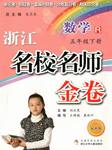题目内容
根据短文内容,从短文后的选项中选出能填入空白处的最佳选项。选项中有两项为多余选项。 选E涂AB,选F涂AC,选G涂AD。
It is generally believed that money can’t buy happiness. However, that may not be always true. According to a recent article, in the last few years, new research has given us a far deeper understanding of the relationship between what we earn and how we feel. Broadly speaking, people with higher incomes are happier than those who struggle to get by. But it also shows you need to spend wisely if you expect those bank notes to put a smile on your face. 1.
1. Buy experiences, not material goods.
In a recently published study, Professor Ryan at San Francisco State University in the US, found that when people don’t have much money to spare, they tend to stick to material goods. 2. But they actually provide both more happiness and more lasting value.
2. 3.
No matter how much money you spend on something and how special that product is, you will get used to having it over time and lose interest in it. With the same money you spend on one big object, you can buy many little things. Buying small things means you can get frequent small pleasures.
3. Be sure to buy time.
4. For example, that big house in the suburbs may seem like a good idea, but a 2014 study by researchers from University of Zurich in Switzerland found that people with longer time on the way reported lower life satisfaction, all other things being equal.
4. Try giving it away.
Elizabeth Dunn, professor at the University of British Columbia in Canada, found that in nations as diverse as Canada, South Africa and Uganda, giving away money consistently made people happier. 5. .
A. Be sure to buy what you like.
B. Here are some ways to better spend your money.
C. Buy lots of little things, rather than one big thing.
D. There are a lot of reasons someone might buy something.
E. People think experiences only provide temporary happiness.
F. This was even true when people giving away were relatively poor.
G. Consider how the things you buy will affect how you spend your time.
 浙江名校名师金卷系列答案
浙江名校名师金卷系列答案书面表达
假设你们班要办一期英语角,主题是“我最喜欢的英文作品”。请你根据以下表格的信息,介绍一下马克·吐温的《哈克贝利·费恩历险记》。词数:100左右。
书名 | 《哈克贝利·费恩历险记》(The Adventures of Huckleberry Finn) |
作者 | 马克·吐温(Mark Twain) |
内容简介 | 哈克贝利·费恩是一个孤儿, 无人管束, 但心地善良,他帮助黑奴Jim逃亡,一路上遭遇了许多艰难险阻,但最终取得了胜利。 |
评价 | 深受全世界青少年读者的喜爱。有人称:“全部现代美国文学起源于马克·吐温的一本名叫《哈克贝利·费恩历险记》的书”。 |


 ),并在其下面写出该加的词。
),并在其下面写出该加的词。